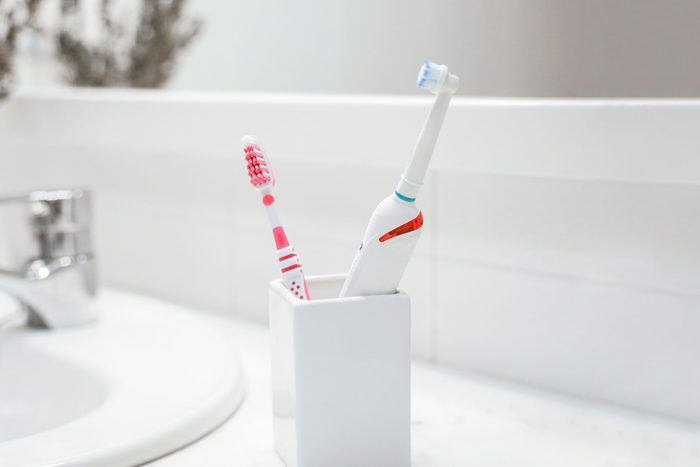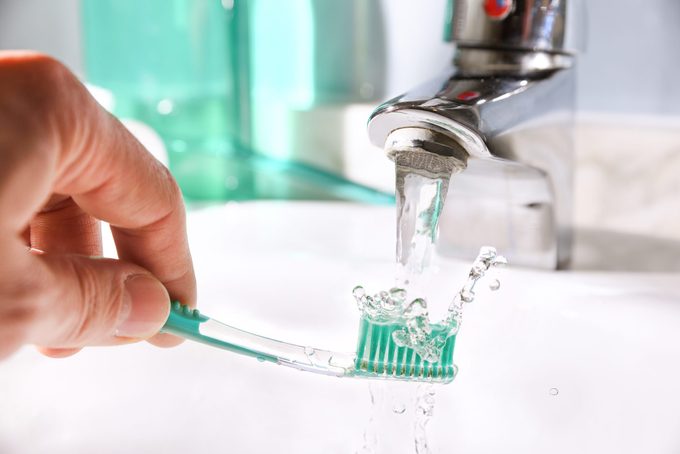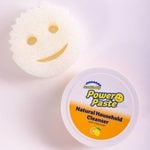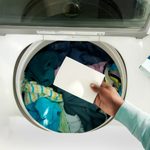How to Clean and Sanitize a Toothbrush

If you know how to clean a toothbrush, you know it isn't time-consuming or costly. But you may be surprised how often you should do it.
We’re more likely to think about cleaning things with a toothbrush than cleaning the toothbrush itself. That’s because it’s easy to space out on cleaning the things that do our cleaning for us.
Making time to clean a dishwasher, washing machine or showerhead helps them sparkle and shine and also makes for a healthier environment. Learning how to clean a toothbrush is no different.
“I always say, never rush while you brush,” says Dr. Roopali Kulkarni, an oral surgeon, university professor and spokesperson for the American Dental Association (ADA). “Take the time to clean your toothbrush too.”
If tidying the bathroom is already part of your cleaning schedule, why not add washing those bristles to the list? Here’s how to clean your toothbrush to keep bacteria at bay and your pearly whites shining.
On This Page
Why You Need to Clean Your Toothbrush
“Our mouth is home to millions of types of bacteria, many good, and some not as good,” Kulkarni says. “Cleaning the toothbrush is getting rid of residue, toothpaste, saliva, blood and plaque, which is a sticky substance that holds some of the bacteria in our mouth.”
Thinking about the gunk on your toothbrush? Don’t get too grossed out just yet. The ADA says that while toothbrushes do harbor bacteria, there’s no evidence it causes adverse health effects.
How Often Should You Clean Your Toothbrush?
Those tooth scrubbers are definitely a household item you don’t clean often enough. Clean it after each time you brush your teeth. It won’t take as long as it does to, say, clean the kitchen from top to bottom. But it should take the same amount of time as actually brushing your teeth.
“If you use it twice a day, clean it twice a day,” says Kulkarni.
How to Clean a Toothbrush
It doesn’t differ much whether you’ve got a manual toothbrush or an electric one. Here’s how to clean yours effectively:
How to clean a manual toothbrush
-
- Run water on it until the bristles are free of residue and debris. “Rinse the head with warm tap water thoroughly until it looks clean after you use it,” Kulkarni says.
- Rinse off the handle until it’s clean, too. Kulkarni says no matter what material your toothbrush is made of —plastic, bamboo, wood, whatever — thoroughly dry it when you’re done.
- Store it upright so it can air dry.
How to clean an electric toothbrush
-
- Run warm tap water on the bristle head until it’s free of residue and debris.
- Rinse off the handle until it’s clean. “Be mindful if the brush has a cord or a charger, so you keep it away from water,” Kulkarni says.
- Like a manual toothbrush, store it upright to air dry.
How to Disinfect a Toothbrush
Have you heard soaking a toothbrush in hydrogen peroxide cleans it better? Dental research hasn’t decisively concluded whether it does. According to Kulkarni, rinsing it with warm water after each use is enough to keep it clean.
If you feel like doing something extra to de-germify your toothbrush, there are sanitizing devices on the market, including those that employ ultraviolet rays. “Look for ones that are approved by the FDA [the Food and Drug Administration] or have the ADA seal of acceptance,” Kulkarni says.
How to Store Your Toothbrush
Storing a toothbrush upright allows extra water to drip off it instead of pooling at the bristles, which encourages bacteria to thrive. It’s also important to give it space. “Keep it away from other toothbrushes when you’re done, so it doesn’t get contaminated again,” says Kulkarni.
If there are multiple people in a home and you store all the toothbrushes in a common holder, make sure they aren’t touching. Kulkarni also recommends keeping them far from the toilet. “When you flush, water can splash up and land on your toothbrush,” she says. Not exactly the feel-fresh situation we’re looking for. (Always close the toilet lid before flushing, if you aren’t already.)
How Often to Replace Your Toothbrush
According to the ADA, replace your toothbrush approximately every three to four months, or more often if the bristles are matted or frayed. The effectiveness of the brush decreases as the bristles wear.
“Typically, we recommend soft-bristled toothbrushes, but you might notice the bristles are floppy or worn down more quickly,” Kulkarni says. “That’s a sign that the material has become frayed, and it’s time to replace it.” Do the same with electric toothbrush heads.
FAQs
Does boiling a toothbrush disinfect it?
Boiling-hot water certainly cleans things, like glass shower doors, but it’s not the best option for toothbrushes. “The high heat can damage the material and the bristles,” Kulkarni says. “It’s best to rinse it under warm water every time you use the brush.”
The ADA also doesn’t recommend microwaving or putting toothbrushes in the dishwasher, for the same reason.
How do you keep a toothbrush clean?
Never let it stay dirty. You don’t want your tooth scrubber to be one of the germiest things in the bathroom. Rinse it and get rid of debris immediately after using it. Every. Single. Time.
Can toothbrushes be shared?
No. According to the ADA, toothbrushes should not be used by more than one person. Doing so could result in an exchange of bodily fluids and microorganisms, and you really don’t need that to happen.
How do you keep a toothbrush clean while traveling?
Use a plastic bristle cover to keep your toothbrush away from other products in your toiletry bag. And when you get to your destination, take it off so the toothbrush has ventilation.
“Moisture makes more bacteria grow,” says Kulkarni. “Covering the toothbrush when it’s wet is exactly what you need to avoid doing.”



